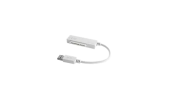Metanis
Well-Known Member
- Reaction score
- 941
- Location
- Medford, WI, USA
Doctor client with HIPAA concerns wanted me to wipe and clean a couple of his older laptops for disposal or gifting. I had installed SSDs in these a few years ago. Both laptops are 10-year-old Sony Vaio's with 3rd gen core i7 and running Win10 home. One has a Crucial MX500 and the other a Samsung 860.
The Samsung was rather easy to wipe by using their integrated Secure Erase from the Magician Software. Kind of interesting though, they require you to disconnect the SATA cable while the power to the device is ON! Luckily for me the Vaio is easy to get access to the HDD compartment.
The Crucial drive was more challenging. Storage Exec isn't as friendly. It won't work if you're trying to erase the boot drive and it won't detect the drive if connected via a USB caddy. I was on-site and had no access to a bench machine where I could have connected directly via an internal SATA cable.
Eventually, my son gave me an idea. After connecting the drive to a machine with Windows Pro I enabled Bitlocker on the Crucial and let it run. Then after it reported the drive was 100% encrypted I ran Diskpart and blew away all the partitions, placed the drive back into its original machine and ran Windows 10 setup from my flash drive.
My thinking is that since the old data was encrypted before I installed a new copy of Windows and the encryption key is no longer available, only a government actor would be able to recover any of the old data.
Any thoughts on if I'm correct in my thinking?
The Samsung was rather easy to wipe by using their integrated Secure Erase from the Magician Software. Kind of interesting though, they require you to disconnect the SATA cable while the power to the device is ON! Luckily for me the Vaio is easy to get access to the HDD compartment.
The Crucial drive was more challenging. Storage Exec isn't as friendly. It won't work if you're trying to erase the boot drive and it won't detect the drive if connected via a USB caddy. I was on-site and had no access to a bench machine where I could have connected directly via an internal SATA cable.
Eventually, my son gave me an idea. After connecting the drive to a machine with Windows Pro I enabled Bitlocker on the Crucial and let it run. Then after it reported the drive was 100% encrypted I ran Diskpart and blew away all the partitions, placed the drive back into its original machine and ran Windows 10 setup from my flash drive.
My thinking is that since the old data was encrypted before I installed a new copy of Windows and the encryption key is no longer available, only a government actor would be able to recover any of the old data.
Any thoughts on if I'm correct in my thinking?

